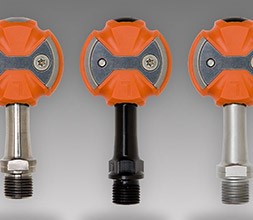

Still, SPDs work great on road and triathlon bikes, and there is nothing wrong with using them if that is what you are most comfortable with. The kicker for road cyclists is that the SPD cleat was really developed for, and is probably most universally known as, a trail and mountain bike pedal. The most common all-around cycling cleat today, but not preferred by many road cyclists. The SPD is the most common kind of pedal and cleat you will find, perhaps with the exception of plain old generic kids pedals. The SPD pedal is perhaps as close to a universal standard as there is in cycling, knowing that there will probably never be a true standard. Most Common Types of of Cycling Cleats SPD Bike Cleats Gaining popularity.Ĭompatible shoes tend to be hard to walk in. Not compatible with indoor cycling.Ĭyclists looking for broader platform. Higher-end road cyclists who want max performance. Not max power - power is transferred in a small contact point. Mountain bikers, general-purpose cyclists, and indoor cyclists. Here is our overview on the common bike cleat types, and some recommendations on which you may want to consider. We were new to all of this once, and wanted to try to break it down for you. This will affect the shoes that you buy, the pedals you put on your bike(s), and other decisions. As a beginner or progressing cyclist, you will need to make a decision on which system (or systems) you commit to. Most cyclists (including us) are gear junkies and will tell you that each cleat and pedal system has a pro and a con, and they all have a place in the market.įor a non-gear-junkie, though, this can make the world of bike pedals and cleats more complex than it really needs to be. Cycling enthusiasts have a way of making things a little overcomplicated, and you have a look no further than the pedal and cleat systems for a case-in-point.


 0 kommentar(er)
0 kommentar(er)
